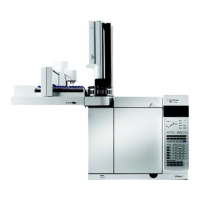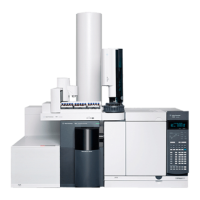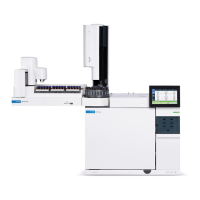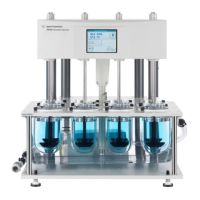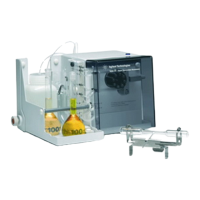162 Advanced Operation Manual
4 Columns and Oven
When developing the backflush portion of your method,
consider the following:
• Ensure that the split vent flow setpoint is at least 25
mL/min and at least 50% more than the column backflush
flow rate.
• If using gas saver, ensure that the gas saver flow setpoint
is at least 25 mL/min and at least 50% more than the
column backflush flow rate.
To backflush using a ramped pressure program
In this case, the backflush occurs as part of the run, so the
detectors continue to collect data. During the backflush, you
may wish to turn off data collection in the data system.
1 Verify that all columns are properly configured.
2 Enter all method parameters for the analysis: sampler
parameters, inlet parameters, oven temperature profile,
detector flows and temperatures, and so forth.
3 Program the oven for the backflush.
• Include any temperature profile needed for backflush.
• Set the total run time to include sufficient time for
backflush.
4 Program the pressure ramp for the column installed
between the inlet and the CFT device. After the last
analyte elutes or after reaching the last temperature of
interest, program a fast ramp (for example, 30 psi/min)
with a final pressure of 0.
5 Program the pressure ramp for the primary column
installed between the CFT device and the detector. The
pressure should increase slightly during the backflush
duration so that the flow into the detectors remains
relatively stable.
If you turned off data acquisition in a data system during
backflush, remember to turn it on again at the end of the
run.
To avoid damage to an MSD, Agilent strongly recommends setting
up backflush as a post run event, not as part of a ramped column
program. If you still choose to backflush as part of a run, be very
careful that the flow into the MSD does not exceed the limits of the
vacuum pump.

